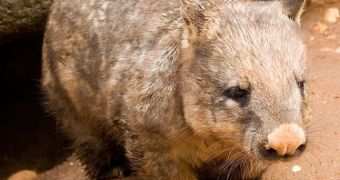Researchers discovered fossils from a group of ancient wombat-like animals in outback Queensland. The fossils from newborns to adults, show how these animals evolved. Scientists observed some similarities between nowadays marsupials and their ancestors.
Even if they look like long-legged wombats, the animals belong to a specie called Nimbadon lavarackorum, that lived over 15 million years ago in a tropical rainforest covered Australia. It comes from the diprotodontids' family, herbivores that lived in Australia for over 25 million years, according to Dr Karen Black, researcher at the University of New South Wales.
The site that the fossils were found on is the AL90, in the Riversleigh World Heritage area. Because of its particular soil it is Australia's richest fossilized remains area. Even if in this region fossils from over 25 million years ago were found, this case is one of the most interesting.
The fossils were in an extraordinary good condition and the fact that there were more than one and of different ages, scientists were able to picture the development process in Nimbadons. “This is a fantastic and incredibly rare site,” Black said. "The exceptional preservation of the fossils has allowed us to piece together the growth and development of Nimbadon from baby to adult."
26 skulls were recovered so far and scientists think that for these animals to have died together, at such different ages, they must have fallen into a hidden cave. Researchers analyzed skulls from newborns to fully-grown adults and said that their development was very similar to today's marsupials.
Dr Black says that when looking at the skulls, “the bones that surround the teeth, the upper and lower jaw, and of the roof of the mouth are quite advanced in their development compared with the rest of the bones in the skull. This is related to the fact that marsupials when they are born, they are born at a very early age - usually less than one month old. They need to make their way to the mother's teat by themselves and attach to the teat and start suckling. Later when the animal begins to chew leaves you can see different features. The back of the skull tends to develop and the area of muscle attachment [becomes] more developed.”
Researchers also noticed that the animal's brain was rather small. Professor Mike Archer co-author of the study says that the animal's brain stopped growing at a relatively early age. “We think it needs a large surface area of skull to provide attachments for all the muscle power it required to chew large quantities of leaves, so its skull features empty areas, or sinus cavities.”

 14 DAY TRIAL //
14 DAY TRIAL //